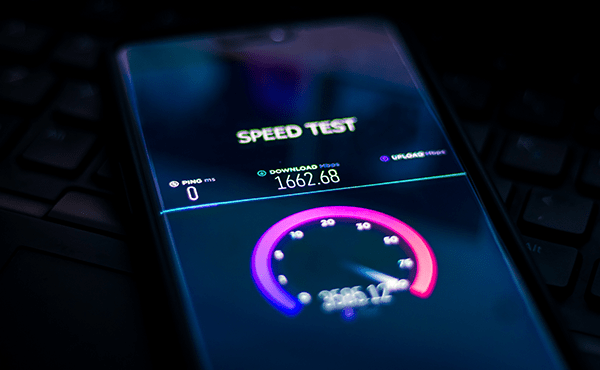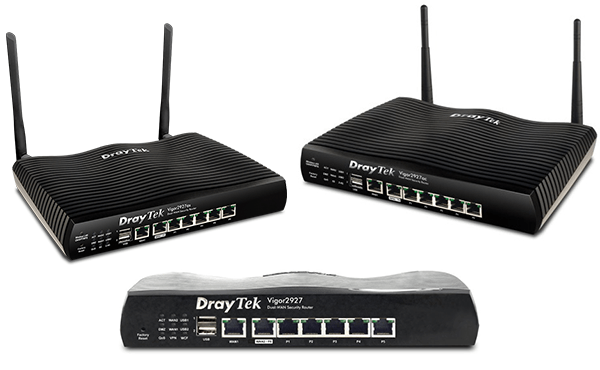

Gigabit Speeds for all
Next-generation broadband connectivity is here or getting nearer, and it’s going to change the way we live and work
Gigabit broadband is coming.
In fact, it’s already here.
According to the latest Ofcom figures, gigabit speeds are now available to around 36% of the UK population, up from 27% in September 2020, and if you live in one of the UK’s biggest cities, it’s likely to be available near you. Yet this is only the beginning. The UK government has set a target for gigabit broadband to be available to at least 85% of UK premises by 2025. What’s more, with its Project Gigabit initiative, it’s investing £5 billion in providing some of the UK’s most hard-to-reach premises with gigabit connectivity.
Oliver Dowden, the Secretary of State for Digital, Culture, Media and Sport provides the rationale; ‘we know the shift to gigabit‐capable broadband will deliver a huge leap forward for this country – opening up infinite possibilities for business, technology, healthcare, education and more.’ And there is some determination to see this through.
Project Gigabit relies on the private sector to deliver gigabit connectivity to the most commercially viable areas of the country, but backs that up with procurement programmes and state subsidies to spread gigabit speeds elsewhere. The programme aims to do this through a series of phased projects, focusing on partnerships with regional and local suppliers. Crucially, Project Gigabit isn’t specific to any one technology. While fibre-to-the-premises connectivity will be the most cost-effective platform for most urban areas, fixed 5G connectivity and even satellite broadband might be called on to reach remote rural and coastal spots.
Why go gigabit?
Curiously, while availability is growing, take-up isn’t growing quite as fast.
The Gigabit Take-Up Advisory Group, assembled by Which? The Federation of Small Businesses (FSB) and the Confederation of British Industry (CBI) has warned that 6-in-10 consumers and a third of small businesses haven’t heard of gigabit broadband and that low demand for gigabit services could hold the rollout back. It’s reported that only one in five people are willing to pay more for Gigabit broadband, while two in five don’t understand how it differs from their existing broadband service. And this is a shame. Right now it’s true that only a handful of applications really make use of those gigabit speeds; even 4K video streaming won’t put a basic 38-50Mbps connection under too much strain. It’s only when you stream your own HD video to a service like Twitch or YouTube, use game streaming services or upload or download huge files that you’re really going to feel the squeeze.
Yet things are changing, and single application bandwidth is far from the biggest issue. For one thing, more of us are working from home and finding that, even with cloud-based services and VPN connections, cloud or corporate network-based applications aren’t always as responsive as they could be. Access to shared files and data isn’t always instantaneous. Anyone working in creative industries or in data-intensive applications will know that while existing fibre broadband services give you plenty of downstream bandwidth, upstream bandwidth can be a real productivity killer – especially if you’re dealing with multi-GB files.
Meanwhile, where video chats and meetings should be smooth, they have a tendency to stall and stutter when connectivity falls short – or when someone else in the house starts a Netflix binge while you’re trying to present a slide deck. With a gigabit connection, this won’t be a problem. There’s ample bandwidth for multiple users to use intensive applications simultaneously, and for one person to be involved in high-definition video conferencing while others in the household work and play. With a gigabit connection, you can feel like you’re on the office network while you’re hundreds of miles from the office, and large uploads no longer come with epic waits. Online storage operates like local storage, and you have the high speeds and low latency for virtual desktop infrastructure (VDI) and the most data-intensive, cloud-based applications. This could take remote working up to the next level, and it’s also pretty good for games and entertainment.
What’s more, gigabit speeds give you future-proofing for applications that are in their infancy – or that don’t even exist yet. IoT devices are rapidly proliferating, and as more smart sensors and appliances enter the home, we need the bandwidth to keep them all connected to the cloud and edge-based services they work with. Plus, remember that only 10 years ago the idea that we’d be struggling with a 50Mbps fibre connection would have seemed laughable. Only ten years before then, most of us were putting up with 56Kbps modems. From immersive virtual and augmented reality to high-tech, video-enhanced collaborative workspaces, there’s no knowing what applications and requirements the next 10 years could bring.
Future-proofing the network
One thing’s for sure, however; we’ll only get the full benefits of gigabit connectivity if our home and office networks are up to scratch.
ISP-provided, consumer-grade routers will be able to use this next-generation connectivity, but do they provide the load-balancing, VPN support and rich QoS features that you’ll need to work and collaborate in the next few years?
This is where routers like the DrayTek Vigor 2927 series come into their own, putting business-grade features at the heart of the home network, with gigabit WAN connectivity, 5+1 gigabit LAN ports and support for up to eight different VLANs, so you can share a broadband connection across the household, but have a secure and reliable connection by segregating the work network from the home.
DrayTek 2927 Series Router
WiFi 6 Mesh Wireless Access Point
Buy DrayTek 2927 Series Router
These routers are also a good option for companies looking to improve the home networks of key employees, as they can be managed and configured remotely and provide integrated 4G/LTE failover capabilities along with robust VPN support. Plus, while gigabit Ethernet cables remain the best way to spread gigabit broadband throughout the home, it’s still not always practical. DrayTek VigorAP 1060C access points provide the answer by adding next-generation Wi-Fi 6 networking to the mix.
Wi-Fi 6 makes use of advanced low-latency, high-bandwidth wireless technologies to make up to 3.6Gbps dual-band performance available to Wi-Fi 6 devices in the home. As Wi-Fi 6 arrives in more laptops, smartphones, and tablets, that’s going to make a huge difference to where and how we can work within our homes. Put it on the same team as gigabit broadband, and you’ll be amazed that you ever put up with less.
More DrayTek Products Available from Comms Express:
DrayTek Routers & Modems | DrayTek Access Points | DrayTek Switches | DrayTek VoIP | DrayTek License & Warranty Subscription Packs | DrayTek MRB Accessories
If you require any further information on these or any other products that we stock here at Comms Express, please do not hesitate to contact our team who will be only too happy to help.
Until next time…

